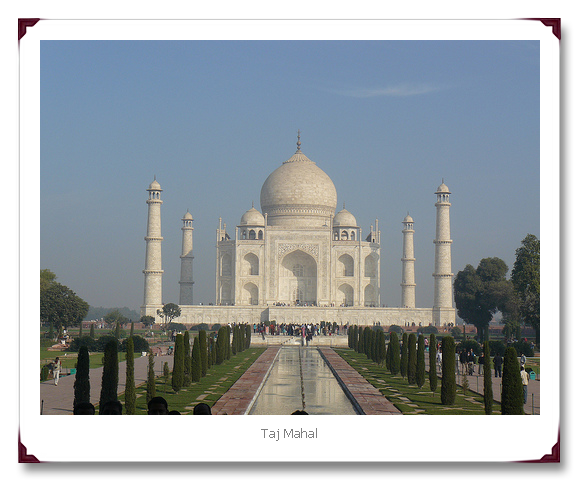I. Introduction
Climate change, environmental destructions, pollution, energy crisis… are hard problems of our world today. The pro-material but not pro-human economy where people are in chase of benefit, would result in a world of competition and increasing injustice, poverty, ignorance and violent conflicts. Reflecting carefully our way of life, we need to change, to get away from an energy- and waste-intensive lifestyle and live more in concert with the production and assimilation capacities of the Earth. We must recognize the fact that we cannot live alone in the planet but we are interdependent to each other and other species in the larger nature. We should reawake ourselves the important role of nature, human relationship and community values in our lives. Ultimately, the main cause that underpinning all is the present mindset or set of values in our convention societies. Therefore, as education is the key to tackle these global challenges, its vision should be revised in order to create enthusiastic agents of change of today and thoughtful leaders of tomorrow. Education is the most important and effective investment for future.
II. Vision and Philosophy
Since our problems are complex and interrelated, they require systems thinking as well as an integrated and interdisciplinary knowledge to manage. Thus, a creative and holistic approach to education for sustainability is what we are searching for. The new vision should embrace sustainability in all aspects of life, environmental, economic, cultural, social and spiritual, as described beautifully in the Earth Charterii. Moreover, education for sustainability should be integrated at all levels of education systems, from as simply as teaching the love of nature and human to children, up to community level as raising public awareness. Actually, most of our actions are induced by our subconscious, which has been formed from very early ages. And the main educational goal is the development of human beings in the fullest meaning, not only providing skills but also nurturing the compassion of life in their hearts and inspiring their minds positively.
Capra saidiii, ecoliteracy - the understanding of the principles of organisation that ecosystems have evolved to sustain the web of life – is the first step on the road to sustainability. The core philosophy of sustainability lies in the appreciation of nature as the symbol of integrity, stability and beauty. Sustainability holds a philosophy of respect and caring, cooperation rather than competition with nature and with each other, as we can see in permaculture ethicsiv: (i) care for the Earth, including all living and non-living things, such as animals, plants, land, water and air, (ii) care for people, (iii) share resources and surplus (labour, money, information, knowledge) to help others achieve their needs - our relationship with others becomes the basis of community caring, (iv) reducing and taking responsibility on consumption.
III. Practical Approach
1. Creative Education: Education for Sustainability should recognize and integrate many interesting ways of learning besides the conventional teaching:
- Teaching by being examples: green teachers
- Group work/team work to teach cooperative spirit
- Experience-based learning, through school gardens, working in the field, helping other people in need, voluntary services in local community..
- Visual learning: with the help of movies, audio, documentaries, internet…
- Project-based learning, problem-based learning
- Excursions to natural sites, forests, national parks…
- Learning through Art…
2. Green Science and Technology
Curriculum should integrate ecoliteracy in all level of education system. These principles of sustainability would become guiding lines of green-living for a sustainable future. Green science, eco-designs and appropriate technologies should be taught in universities.
3. Education for Global Citizenship and Social Responsibility
- Education for Peace, teaching of living-values
-Teaching of respecting and celebrating diversity, multicultures, equality, social responsibility and global citizenship
4. Raising public awareness, integrated community-based solutions
- Enhancing local community living through cultural change, recycling, sharing, “grow, shop and eat local”…
- Strategies for livable and green cities, eco-villages: urban agriculture?, bicycling, public transportation, green building (making improvement in energy efficiency, using renewable energy, solar roof, green roof)…
IV. Conclusion
As the crisis we face is first and foremost the crisis in perception and values, education for sustainability is essential for society in shifting from our present way of being, thinking and relating that is separated, reductionist and linear to a more holistic, ecological worldview. This is a necessary perceptual shift for humanity to live sustainably by understanding of our co-existence on this planet, how we are systemically interconnected and mutually interdependent in the web of life. That vision leads us to cooperate with all other humans and other living beings, and encourages a meaningful lifestyle in which we live more close to nature, more simply but healthily and richly. It encourages a culture of mutual respect, solidarity and love that nurtures the human spirit. A sustainable society should be the community where people living harmoniously with the Earth and its inhabitants, then it is sustainable in all aspects, economically, socially, culturally and ecologically. There are cooperative, caring relationships that cultivate inner peace and spread a friendly, reliable atmosphere around. Sustainability vision recognizes what is deeply and fundamentally important to us – our connection with each other and with the natural world.
References
iCapra F. The Turning Point: Science, Society, and the Rising Culture. Simon and Schuster, 1982.
iiEarth Charter: http://www.earthcharter.org/
iiiCapra F. The Hidden Connections – A Science for Sustainable Living. Anchor Books, 2004.
ivPermaculture Ethics: http://www.seedinternational.com.au/pc_ethics.html
v Cull J. The Circularity of Life – A Shift in Worldview for Sustainability. Ebook on
http://www.lifesnaturalsolutions.com.au/











































